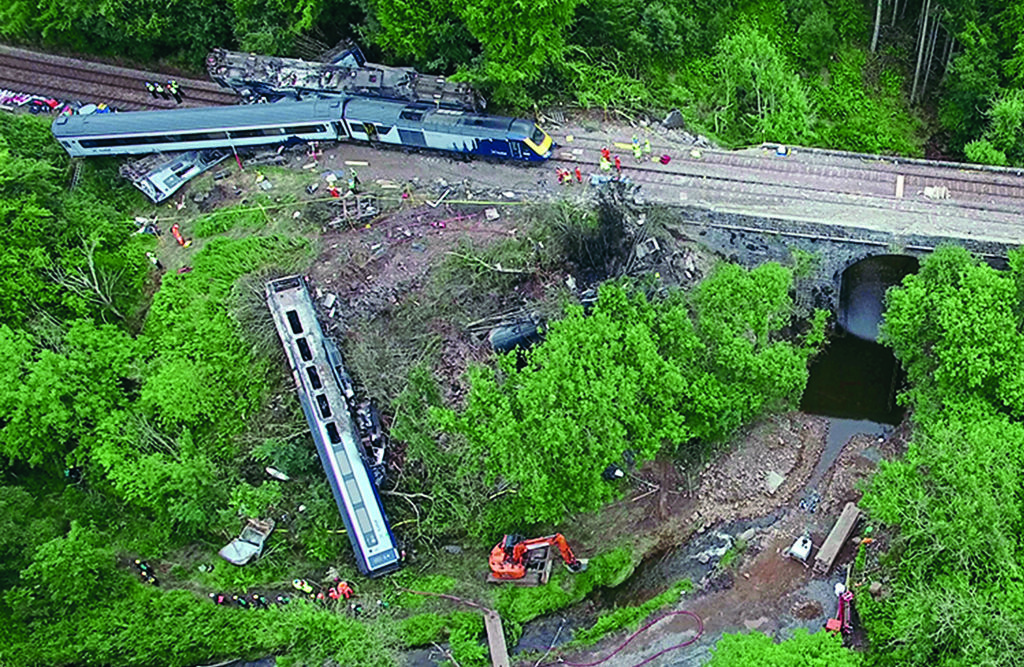The Rail Accident Investigation Branch has released its report into the fatal derailment of a ScotRail Inter7City train at Carmont following torrential rainfall on August 12, 2020.

The train involved in the accident, 1T08 – formed of Class 43 HST power car 43140, Mk.3 trailer 42145, 42564, 42007, 40622 and trailing power car 43030 – was returning to Aberdeen after a blockage on the line ahead had been reported. It derailed after striking debris on the track that had been washed out of a drainage trench.
The derailed train, travelling at 73mph, deviated to the left before striking a bridge parapet, with the train scattering around the site and the lead power car and first three vehicles all suffering extensive damage.
Train driver Brett McCullough, conductor Donald Dinnie, and passenger Christopher Stuchbury were tragically killed, with the remaining six passengers all suffering injuries.
The RAIB has concluded the accident was caused by incorrectly installed drainage at the site that had not been built to the approved plans by contractors Carillion, which had been appointed to carry out the drainage works at the site between 2011 and 2012. The drains were therefore unable to accommodate the heavy water flows that occurred in the lead-up to the accident.
Investigators found that a low earth bank (known as a bund) had been constructed that ran across a slope leading towards the track. The presence of this bund significantly altered the flow of water, causing a concentrated flow into a steeply sloping section of trench.
The intensity and duration of rainfall on August 12, 2020, would have generated water flows into the trench sufficient to wash away the gravel fill and the ground immediately surrounding it.
The report said that there were no written processes or training in place to instruct signallers or route controllers to advise trains to operate at lower speeds in circumstances that may require it, such as during that day’s weather conditions.
The way Network Rail manages incidents involving extreme weather was also raised as an issue requiring further attention by the report. Both Network Rail and ScotRail have made changes to their procedures since the accident.
The design of the refurbished HST was also highlighted in the RAIB’s report, with a new train built to modern standards including a number of features within the design intended to minimise damage in case of a collision or derailment.
Such was the force of the derailment that the train suffered extensive damage; had it not had so few people on board at the time of the accident, the number of casualties could have been far greater.
The RAIB concluded: “While it is not possible to be certain about what would have happened in the hypothetical situation with different rolling stock in the same accident, the RAIB considers it more likely than not that the outcome would have been better if the train had been compliant with modern ‘crashworthiness’ standards.”
A total of 20 recommendations have been made by RAIB in its report.


